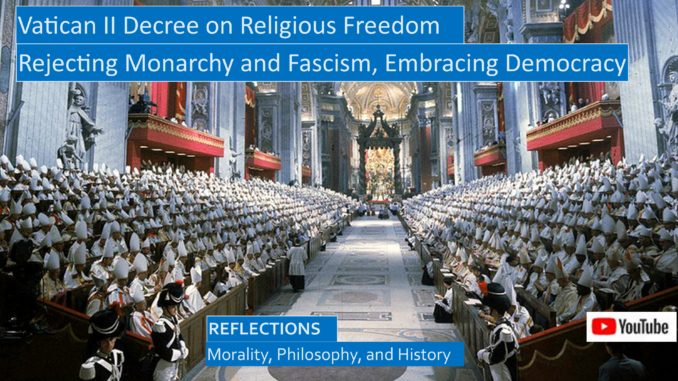
How can so many church goers blindly support Trump although Trump is the antithesis of Christianity? Many Christians who feel alone in their opposition find hope in this editorial of the leading magazine Christianity Today:
https://www.christianitytoday.com/ct/2019/december-web-only/trump-should-be-removed-from-office.html
The Catholic version of this type of protest was made by Pope Pius XI in his papal encyclical “Mit Brennender Sorge”, translated in English “With Burning Concern”, which was successfully secretly smuggled into German and read from every Catholic pulpit on Palm Sunday in 1937. Hitler was not named but rather referred to as the mad prophet oppressing the Church and breaking the terms of the Concordat. The encyclical proclaimed the true belief in God could not be reconciled with the idolatrous deification of a race, people or state, that the God of Christianity could not be imprisoned in a single race. You can read the fascinating histories of how Christians coped under the various Fascist regimes in our blogs at:
http://www.seekingvirtueandwisdom.com/category/facism/
The memories of World War II are key to understanding the teachings of Vatican II and the Catholic Catechism. During the war years there were many brave bishops in Germany and France, and the Pope, who took public and private stands pushing back on the horrors of the Holocaust and Nazi brutalities. However, the attitudes of the clergy reflect the attitudes of the political culture in general, most supported the political status quo, many lived quiet lives of passive resistance, a precious minority actively resisted the horrors of Nazi terror.
YouTube video for this blog: https://youtu.be/i_zGeTW9QMI
In contrast, in the early interwar years most Christians were tolerant of fascist regimes because the fascists were the sworn enemies of communism, and communism was the sworn enemy of the church. After Lenin seized power in Soviet Russia, his communists murdered tens of thousands of priests and millions of Orthodox believers. Likewise, the communists in the Spanish Civil War copied the Russian communists by torturing and murdering thousands of priests, monks and nuns. Historical memories of the terrors inflicted on the church by French Revolutionaries caused many in Europe to distrust democracy.
Just because Nazi Germany and fascist Italy were defeated in World War II, there were still many in Europe who were sympathetic to the fascist ideology. Rogue priests and bishops were active in running the ratlines which secreted former Nazis to Latin America, with toleration or cooperate from US Intelligence officers.[1] The defeat of the Axis powers and the publicity about the concentration camps may have discredited anti-Semitism, but it did not totally destroy such evil in the hearts of men. Few traditional Catholic priest or bishops were anti-Semites, but the few that were anti-Semites were all “traditional” Catholics.
Contrary to the impressions of many, Vatican II did not introduce any theological reforms, Vatican II sought to share with the world the theology of the original reform council, the Council of Trent. What Vatican II changed was the political philosophy of the Catholic Church. Under Vatican II, the Catholic Church recognizes that totalitarianism is either the enemy or a false friend of the Church, and embraces democracy as the best friend of the Church.
Vatican II marks a shift in the Church’s attitude towards the modern secular world. Gone are the anathemas that condemn those who may disagree with the teachings of the church, instead Vatican II seeks dialogue with the modern world in with a pastoral rather than a condemning attitude. The Vatican II decree on religious freedom announced that democracy and freedom of religion and conscience were the friends of the church, that a totalitarian form of government could never be a trustworthy friend of the Catholic or Christian Church.
The Church Fathers of Vatican II believed that the Catholic guarantee of Religious Liberty was crucial for regaining the respect of many believers and the modern world. History had evolved so that the Catholic Church was not on the side of truth regarding religious liberty. From ancient times the Catholic Church was supported first by the Roman emperors starting with Constantine, and then the royalty of medieval Europe, but the absolute monarchies had all disappeared, giving way to dictators and republics, some of which were constitutional monarchies. The Jacobism of the French Revolution and its grandchild communism were the enemies of the church, and the church supported fascism to combat communism. World War II totally discredited fascism, now the Catholic Church saw democracy as the bulwark opposing communism, and religious liberty was a cornerstone for democracy.
The Vatican II Declaration on Religious Freedom, or Dignitatis Humanae, teaches us that just governments should not only reluctantly tolerate religious freedom, but should rather seek to encourage a healthy civil environment in which religious worship and institutions can thrive, encouraging the religious and the whole society to live a more moral life.
In the spirit of Vatican II, we should recognize that a striving democracy is essential to guarantee that the Church can fulfill its mission, and that believers should never demonize any political party simply because the church does not agree with all of the planks in their platform. We should especially not demonize a political party that enthusiastically champions the doctrine of social justice, the doctrine of social justice that is central to so many papal decrees and encyclicals since Rerum Novarum issued over a century ago.
Pope Francis teaches us that although abortion is a critical issue for Catholics, that this anti-abortion stance does not define Catholicism. Pope Francis teaches us that it would be unwise for believers to single-issue voters, but if they insist on being single-issue voters, that single issue should not be opposition to abortion, rather the single issue should be social justice. A citizen’s right to life does not end when he is born.
https://www.vox.com/2018/4/11/17220108/pope-francis-catholics-conservative-abortion-gaudete-exsultate-twitter-church-apostolic-exhortation
HOW ARE FREEDOM RELIGION AND “DO NOT SLANDER” COMMAND LINKED?
The Catholic Catechism’s teachings on the commandment, Do not bear false witness against your neighbor, which also warns us against the evils that will come down all of us when we slander or gossip or lie to harm our neighbor, especially our most powerless neighbors, have several surprising references to decrees of Vatican II. The decree first referenced is Dignitatis Humanae, or Declaration of Religious Freedom, which reaffirms the American constitutional position on the freedom of religion.
The Catholic Catechism teachings on the Commandment, Do Not Bear False Witness Against Thy Neighbor, first teaches us that for us to speak truthfully in our dealings with our neighbor, we must first seek what is true and respect what is true, allowing the truth of the Gospel to rule our lives. Love for our neighbor, love for our God, love for the truth, these loves must first show respect for the dignity of our neighbor, for our God, and for the truth.
Which leads to the question, what does the right of freedom of religion have to do with bearing false witness, slanders, gossiping and lying? To answer this question, when we read Dignitatis Humanae, the puzzling first sentence reads: “A sense of the dignity of the human person has been impressing itself more and more deeply on the consciousness of contemporary man.” The Vatican II decrees repeatedly teach us that we should concern ourselves with the human dignity of all people no matter their wealth or class or race or gender, but it raises yet another question, what does concern of the dignity of persons have to do with religious freedom?
This sentence has a footnote, and we scroll to the end of the document and notice that much of the beginning and end and some of the middle of this document references Pacem in Terris, known also by its English title of Establishing Universal Peace in Truth, Justice, Charity, and Liberty. This was the last encyclical released as an Easter gift to the world before Pope John XXIII passed away, the pope who called the Vatican II Council. It was the first papal encyclical to be published in full by the New York Times, radically influencing Catholic social teaching up to the present, leading to a UN council on social justice attended by theologians and statesmen from around the world.[2]
PACEM IN TERRIS
A great summary of the Catholic teaching on Religious Liberty is stated in Pacem In Terris, the last papal encyclical by Pope John XXIII, the pope that opened the windows of the Church by calling the Vatican II church council. Pacem In Terris teaches us that the rights that modern man has the right to demand from their governments, such as freedom of religion, are inseparable rights, all of which are guaranteed only if the government is ruling justly, proactively seeking to guarantee that all citizens, no matter how humble, can look forward to a life of adequate opportunity free from tyranny.
Pacem in Terris was written in the long tradition of Catholic teachings on social justice, starting with Rerum Novarum, the papal pronouncement on the need to provide a living wage and safe working conditions to the working poor, and was an influence on the policies of the New Deal during the Great Depression of the 1930’s. The decree starts with the ringing declaration, “Peace on Earth—which man throughout the ages has so longed for and sought after—can never be established, never guaranteed, except by the diligent observance of the divinely established order.”
Church doctrine does not change, church teaching does not change, but political systems do change, and technology continues to advance with remarkable inventions and processes. Pacem in Terris celebrates “that a marvelous order predominates in the world of living beings and in the forces of nature, which is the plain lesson which the progress of modern research and the discoveries of technology teach us. And it is part of the greatness of man that he can appreciate that order,” and harness those forces to benefit mankind. What had not changed, but which modern man often forgets, is that man was created in the image of God, entrusted to be the lord of creation.
What has also not changed is the fact that the moral laws apply to all people, no matter their rank in society. Many modern men are deluded into believing that the moral law only binds individual men to behave properly to one another, but Pacem in Terris reaffirms that the moral law also applies to relationships between men and the state, and to international disputes and behavior between states, and between states and international institutions like the UN and the World Bank and the IMF.
Also affirmed, “man has a right to live,” he has a right to live with dignity, with sufficient “food, clothing, shelter, medical care, rest, and necessary social services,” to be cared for when he is sick, disabled, widowed, elderly, or when he cannot earn a living through no fault of his own. Man should be guaranteed freedom from harassment, freedom of speech, and be enabled to get a good education and realize his potential regardless of his class or wealth.
The right of freedom of religion is not seen as a freedom in isolation, it is listed among a series of many other freedoms. Man has the right “to worship God according to the right dictates of his own conscience, and to profess his religion both in private and in public.”
“Hence, too, Pope Leo XIII declared that ‘true freedom, freedom worthy of the sons of God, is that freedom which most truly safeguards the dignity of the human person. It is stronger than any violence or injustice. Such is the freedom which has always been desired by the Church, and which she holds most dear. It is the sort of freedom which the Apostles resolutely claimed for themselves. The apologists defended it in their writings; thousands of martyrs consecrated it with their blood.’” Worker rights championed by Rerum Novarum are reiterated, workers should be paid a living wage and labor under safe and humane conditions, and just as important, private property rights should not be violated, but with these property rights come a social obligation to treat the workers and the poor fairly.
Pacem in Terris teaches us that men should be guaranteed most of the rights in the American Bill of Rights and the Four Freedoms, FDR’s New Deal declaration that every man should be granted the freedom of speech and expression, the freedom to worship God in his own way, the freedom from want and the freedom from fear. Also, men should be guaranteed the right to emigrate and immigrate when there are just reasons for it, and refugees should be treated with kindness, since we are all citizens of the world-wide community of men. With these rights come the responsibility to protect these rights for others, treating all with dignity.
The last half of Pacem in Terris discusses both how the citizen should obey authorities and how the state should serve its citizens. Governments should be responsive to the needs of their citizens through a representative government, there should be a functioning and fair judicial system and a fair system of law, the world of nations should disarm and live in peace.[3]
We learn from Pacem in Terris that freedom of religion, like all other freedoms, like freedom of speech, freedom of association, freedom from being held in jail without being charged of a crime, that none of our freedoms exist in isolation, that they can only be guaranteed in a society that is free in all respects, where all citizens are governed equally under the rule of law, where the dignity of all citizens is respected and protected.
DIGNITATIS HUMANAE, VATICAN II DECREES ON FREEDOM OF RELIGION
Dignitatis Humanae decrees that “all men are bound to adhere to the truth, once it is known, and to order their whole lives in accord with the demands of the truth,” and it is this searching for truth that is cited by the Catechism’s reflections on the commandment, Do Not Bear False Witness to Your Neighbor.
Dignitatis Humanae was one of the most controversial decrees of Vatican II, discussed in several sessions, the first five drafts were rejected as inadequate or incomplete, over five hundred comments were submitted by bishops or other interested Catholic parties, the sixth draft was finally approved in the third session after many, many hours of debate.
Most Americans would be puzzled that a decree would even be necessary, Doesn’t everyone believe in freedom of religion? But American history differs from European history. The American bishops, led by John Courtney Murray, and the Eastern European bishops whose societies suffered under the yoke of Communism supported the right to religious freedom. But those who live in dioceses that are primarily Catholic, in particular those in Spain, where the government sponsors the Church, competing Protestant churches are discriminated against and discouraged.
In Murray’s words, the final decree denies the concept of a “double standard, freedom for the Church where Catholics are a minority, privilege for the Church and intolerance for others when Catholics are a majority.” Murray describes freedom of religion as three tiers. First, religious liberty is a human right and a personal freedom and a collective freedom for the citizenry. Second, religious liberty is a political doctrine on the functions and limits of government in religious affairs. Finally, religious liberty is a theological doctrine that governs the relationship between the Church and the state.[4]
REFLECTIONS BY POPE BENEDICT XVI and JOHN PAUL II
Cardinal Wojtyla, future Pope John Paul II, because of his experiences suffering under a persecuted church, emphasizes how the Decree on Religious Liberty protects not only individuals but also religious communities. Reluctant toleration that seeks to suffocate the Church is not religious liberty, a moral society must allow its citizens the freedom to develop as communities, as man is a social animal. Citizens must be allowed to honor their God in public worship, practice their religion, and be allowed to instruct their children, members, and clergy in the faith. Citizens must not be forced to send their children to public schools that mock and denigrate religion as happened in most communist countries.[5]
Cardinal Ratzinger, future Pope Benedict XVI, summarized the opposing debates regarding the Decree on Religious Liberty. The conservative side, led by the Spaniards, argued that those who are in error in their beliefs do not have the same right as those who believe in the truth. Also, “religious liberty was seen as irresponsibility toward truth.” The deeper argument is whether the concept of religious liberty was “based on a concept of natural law which lacked sufficient scriptural foundation.” In other words, does the concept of religious liberty run counter to the accepted traditions of the Church?
The opposing arguments is that religious liberty in now way decreases the importance of seeking the truth, nor does it deny the truth of the Gospel and our salvation gained through Christ’s Resurrection. Cardinal Ratzinger repeats Murray’s argument, “A faith which demands, on the basis of its universality, universal freedom to preach its message to all the nations in the midst of their traditional religions, must also affirm freedom of belief, otherwise it would contradict itself.” Double standards are not honest.
Cardinal Ratzinger remembers the floor speech by Cardinal Beran, who was imprisoned for many years for proclaiming the Catholic faith in communist Czechoslovakia, who was exiled when he attended Vatican II. “Beran arose and gave his unconditional support to the text on religious liberty, pointing to the history of his country where violent suppression of the Hussite movement had inflicted wounds on the Catholic faith that still have not healed.”
Cardinal Beran was referring to an historical incident that was a root cause for the radicalism of the Protestant Reformation by Luther. John Huss was summoned to the Council of Constance to answer to charges of heresy for his proto-protestant beliefs under a guarantee of personal safety issued by the Holy Roman Emperor. This promise of safe passage was ignored and John Huss was burned at the stake. A Catholic army sent to the Czech provinces was defeated, and a settlement was negotiated, Catholicism was restored, with much bitterness.
You cannot find in Scriptures any direct quotation on freedom of religion because that was just not an issue in the ancient world. In pagan Rome, the worship of the gods was a patriotic duty, and after Emperor Constantine the Christian Emperors were the protectors of Christianity, and the educated bishops and priests ran the state bureaucracy and judicial system. But religious liberty is implied in the many passages that teach us that men must be persuaded rather than forced to accept the faith, that we are saved by choice not force. Cardinal Ratzinger teaches us that “the New Testament testifies to God’s weakness in that He chose to approach man not with legions of angels but solely with the Gospel of His Word and the testimony of a love ready to die” for the salvation of man.
The final draft that was approved put more emphasis on three main points. First, “the unchanging claim that the Catholic Church is the only true religion” is affirmed. Second, religious freedom does not compromise the true faith. “Freedom is a vulnerable privilege, it can easily destroy itself if used without restriction.” Freedom should not be abused. Finally, the decree “leaves intact the traditional Catholic doctrine on the moral duty of men and communities toward the true religion and the only Church of Christ.”[6]
DIGNITATIS HUMANAE EXCERPTS
These are excerpts from the decree on the above points:
“The government should create conditions favorable to the fostering of religious life, so the people may be truly enabled to exercise their religious rights and to fulfill their religious duties, and so society itself may profit by the moral qualities of justice and peace which originate in man’s faithfulness to God and to His holy will.”(6)
The decree “leaves untouched traditional Catholic doctrine on the moral duty of men and societies toward the true religion and toward the one Church of Christ.”(1) [7]
Which brings us back to the section in the decree quoted in the Catechism for the commandment, Do Not Bear False Witness:
“It is in accordance with their dignity as persons, that is, beings endowed with reason and free will and therefore privileged to bear personal responsibility, that all men should be at once impelled by nature and also bound by a moral obligation to seek the truth, especially religious truth. They are also bound to adhere to the truth, once it is known, and to order their whole lives in accord with the demands of the truth.”(2)[8]
So how does religious liberty relate to the commandment, Do Not Bear False Witness Against Your Neighbor?
Just as you can only guarantee freedom of religion in a just society that protects all the liberties of all its citizens, no matter how humble they are, so the individual can only speak well of his neighbor rather than causing him harm through gossip and slander when his whole life is spent searching for and living by the truth.
VATCAN II DEBATES ON RELIGIOUS FREEDOM
For Americans, what is puzzling is why a Declaration of Religious Freedom not be an obvious right, why would bishops argue over this decree over three sessions of Vatican II, and why would it need to go through six drafts before being approved? The United States was the first major country to guarantee the freedom of religion in our founding documents, and the American bishops led by John Courtney Murray led the Council in the formulation of the final drafts on religious freedoms.
To understand the controversy over the doctrine of religious liberty we need to review European history from classical times to modern times. In future years we plan a series of more in-depth blogs in this interesting history, here we will review the broad brush of history as it relates to religious history. This is general knowledge so we will forgo footnotes, instead I will provide links for the various Great Courses that IMHO best pertain to these topics. Painting history with such a broad brush may reveal more about my own personal beliefs than the actual history, hopefully it will spark your curiosity to study further these topics so you can come to your own conclusions.
The concept of religious liberty was an unintended consequence of the Protestant Reformation, before then there was not any separation of church and state, they were one. In the Old Testament Jehovah is the God who cares for his people Israel, there were strong admonitions to protect the rights of the sojourner, but protecting their religious liberty was not among them. In the early Roman Empire the worship of the gods was a civic duty, and after Emperor Constantine converted to Christianity the Emperor saw himself as the protector and head of the Church. Following the fall of the western Roman Empire the Kings of Spain, France, and England, and the Holy Roman Emperor continued to see themselves as the protector of the Church and insisted on the right to appoint bishops and abbots in their territories.
This right of appointment was challenged by Pope Gregory VII in the Investiture Controversy, Emperor Henry IV humbly repented in the snow in the Alps so Gregory would lift his excommunication so his princes would not rebel, but a few years later his armies sacked Rome, and Pope Gregory fled. The Catholic Church would not gain the power to independently appoint bishops and abbots until the rise of the modern secular states, and to this day many European countries pay the salaries of their clergymen.
These binding ties between the monarchies and the Catholic Church were part of the medieval ideal of the three cooperating classes, the nobles, those who fought; the clerics and monks, those who prayed; and the serfs and peasants, those who worked. All of creation was seen as a great chain of being, all of creation was seen as a hierarchy emanating downward from the Almighty, to the angels, to the kings then the bishops, to the princes and nobles, down to the serfs and peasants, and downward to the rest of creation. The Church was the sole possessor of the truth of Catholicism, through the authority of the Scriptures and the writings of the Church Fathers, which only the Church had the wisdom to properly interpret.
PROTESTANT REFORMATION
Luther tore down the first pillar of medieval society when he denied the legitimacy of papal authority and challenged the validity of many long-standing church doctrines with impunity and often with shocking vulgarity. To a certain extent his hand was forced when he was ordered to simply recant his beliefs without debate, recant he would not, with his famous “Here I stand, I cannot to otherwise” declaration. Luther was protected by the Elector of Saxony and many other German princes were sympathetic, many resented the indulgence monies that were flowing from Germany to help build St Peter’s Basilica in Rome. Many German princes and the King of England, upon renouncing Catholicism, were able to seize church property, and sadly the reformation was solidified by the realization that if they returned to Catholicism all these lands would need to be returned.
Luther was able to keep a lid on the tensions between rulers, but after his death the Thirty Years Wars erupted first as wars of religion and evolved in wars of conquest, causing widespread casualties and suffering in Germany. These incessant wars and theological conflicts between Catholics also led to the separation of theology and philosophy, giving rise to the Enlightenment, where the philosophers were the enlightened, not the theologians and clerics. The Treaty of Westphalia which ended these endless cycles of wars with the diplomatic solution that the king or prince would determine the religion of his own state.
After the Reformation various political settlements of disputes between Catholics and Protestants developed the concept of religious freedom. The Anabaptists and later the Baptists were early proponents of religious freedom. The Edict of Nantes guaranteeing the rights of Protestants in Catholic France was a major step forward. Dr Wikipedia has a good discussion of the development of religious freedom: https://en.wikipedia.org/wiki/Freedom_of_religion#Religious_intolerance
FRENCH REVOLUTION AND NAPOLEON
These binding ties between the Catholic Church and the French monarch Louis XIV proved deadly in the French Revolution. The king and all the nobility all lived idle extravagant lives in the Palace of Versailles, the top one percent were taking way too much from the other ninety-nine percent, many of whom were trapped in lives of perpetual poverty and misery. Some peasant priests escaped the carnage, church properties were seized by the state never to be returned, and many priest who refused allegiance to the revolution were executed, and many of those who did not were later executed anyway.
The madness ended somewhat when Napoleon seized power and signed a Concordat with the captive Pope, once again recognizing the role of the Church in society, calling a truce between believers and unbelievers. The Napoleonic Codes enshrined the principles of Liberty, Equality, and Fraternity, and provided a common legal framework across continental Europe, protecting the legal rights of all classes. What were the long-term consequences for Europe? The Catholic Church was seen as the guardian of monarchical privileges, while the revolutionaries were seen as the guardians of the lower and middle classes. The French Revolution accelerated the anti-clerical attitudes of many French and Europeans.
The Popes were sympathetic to monarchs and monarchy because until the Risorgimento, the unification of Italy in modern times, the Pope was a monarch himself of the Papal States in the middle of the Italian peninsula. This was an historical necessity. In the eighth century the Byzantine army was not able to protect Rome from the sack of the barbarian armies, so the Pope requested protection from the Frankish kings. But the Frankish court was north of the Alps while Rome was south of the Alps, so Pepin, the first Frankish King, donated the former possessions of the Lombards, whom he defeated, to the Pope so he could field an army that could help protect Rome from the barbarians and other enemies.
The rise of the modern secular state made the old hotly contested issue of investiture disappear. The reunification of Italy deprived the Catholic Church of her jurisdiction over the papal states meant that the Pope was no longer a worldly monarch. The Lateran Treaty of 1927 between the Vatican and Mussolini’s Italy
THE WORLD WARS DESTROY THE MONARCHIES
Much happened between Napoleon and the two world wars. We will concentrate on the Dreyfus Affair, which drug on for over a decade before it was resolved a few decades before the start of the world wars. The Dreyfus Affair tore apart France almost as much as the issue of slavery tore apart American society in the late 1800’s, and both these issues helped shape the civil rights struggles that help define the modern world.
Alfred Dreyfus was Jewish artillery officer that was accused of treason for passing military secrets to Germany, and was quickly tried and sentenced to life imprisonment on Devil’s Island. New evidence revealed that another officer was the guilty party, Dreyfus was clearly innocent, as revealed by the journalist Emile Zola, but it took several years to arrange a retrial, as the Army would rather let an innocent Jew rot in a tropical penal colony than admit it had railroaded an innocent man. Dreyfus was eventually exonerated and regained his commission in the Army, he eventually died serving France in the trenches of World War I. The Dreyfus Affair deeply divided French society, the republican anti-clerical liberals convinced of his innocence, the pro-Army mostly Catholic conservatives championing a poisonous anti-Semitism. Dr Wikipedia has a good summary of the many twists and turns of the Dreyfus affair: https://en.wikipedia.org/wiki/Dreyfus_affair
When World War I was triggered by an assassination of Archduke Franz Joseph of Austria in Serbia, Kaiser Wilhelm of Germany gambled that his army could conquer Paris and knock France out of the war in four weeks, the Germans advanced deep into France, but the Civil War technology of the time favored the defender and the Western Front was bogged down for years of miserable trench warfare, wasting the lives of tens and hundreds of thousands of soldiers with each major bloody campaign across the killing fields and no-mans land between the opposing trenches.
With the invention and improvement of both the tank and the airplane, Nazi Germany under Hitler succeeded where Kaiser Wilhelm failed, first Poland, then France was quickly knocked out of the war by fast moving blitzkrieg tactics. Hitler ruled over the whole of continental Europe for several years, losing in part because to Hitler killing communists and exterminating Jews was a higher priority than winning the war.
The response of the Catholic and Protestant Churches to fascism and the murderous anti-Semitism culminating with World War II was mixed. Before Hitler the Church’s enemy was communism. The Spanish Civil War, which was a practice run for the Battle of Stalingrad, saw bloody massacres on both sides, but the communists were the ones who massacred the priests.
The Nazis in Germany were a mass movement, and Hitler was every bit as popular then as Trump is today. Among the Protestants only about a fifth of the churches were Confessing Churches protesting against Nazism, about as many supported Hitler’s policies against the Jews, the rest were like tepid dishwater. The same sort of split occurred in the Catholic Church in Germany.
Pope Pius XII was pope before and during World War II, many scholars accuse him of being too cautious in his dealings with Hitler, but he faced a dilemma, if he spoke out too forcefully Hitler would simply murder more priests along with the Jews. Many priests were martyred in the death camps, one famous martyr is St Maximillian Kolbe. Officially the Vatican was neutral, but during the war he had many German Catholic priests deliver a protest sermon on Easter Sunday against the brutality of the Fascist regime. Multiple encyclicals were issued protesting against totalitarianism, and the Vatican officials covertly saved the lives of many thousands of Jews. Hitler planned to execute the Pope and his bishops after he won the war.
The response of the French Catholics to fascism was more problematic. When France fell the leftist republican government officials fled to form a government in exile, leaving behind the religiously conservative French officials who formed the Vichy wartime government that collaborated with the Nazis. In contrast, most of the leadership and membership of the French Resistance were communists. The Vichy government was led by a virulent anti-Semite, the hero of World War I, General Petain. The French Revolution slogan of liberty, equality, and fraternity were replaced with the Vichy slogan of work, family, and fatherland. The foundations of the Vichy government were simultaneously pro-Catholic, pro-life, pro-fascist, anti-communist, and were definitely opposed to those who supported the rehabilitation of Albert Dreyfus. Vichy officials often eagerly hunted down the Jews and helped the Nazis pack them on the death trains headed for the concentration camps.
VATICAN II OPENS THE WINDOWS OF THE CHURCH
We must not forget the dates when the Vatican II councils were held, 1962-1965, were only twenty years after end of World War II, many attending bishops suffered through the war years. Cardinal Wojtyla, later Pope John Paul II, luckily escaped death by working as a laborer in Poland. Cardinal Ratzinger, later Pope Benedict XVI, was forced into the Hitler Youth in the ending days of the war, and quickly left his post. Yves Congar served in the French Army and was a POW in Germany, attempting escape many times.
When Pope John XXIII decided to throw open the windows of the church to let in the fresh air from the modern world, he was enthusiastically supported by many bishops around the world. World War II had changed the world forever. Before the two World Wars the Catholic Church equated democracy with the excesses of the French Revolution where many priests were beheaded and all church property was seized. After World War II the monarchies of Europe that the Catholic Church had supported had disappeared. Now the Catholic Church supported democratic regimes and opposed totalitarianism.
Pope John XXIII wanted Vatican II to be a council of all Catholics, including both the traditional Catholics and the new reforming Catholics, those reforming Catholics who so often had been silenced in the years preceding Vatican II. The original schemas for Vatican II were mostly drafted by the traditional cardinals and bishops of the Curia in Rome. The Pope and the Church sought consensus and overwhelming majorities for all the Vatican II constitutions and decrees.
The original Vatican II schema on Ecumenism included a chapter on religious liberty. Cardinal Bea and many bishops knew if the Catholic Church wanted to be included in the ecumenical discussions between the churches, it would have to affirm the rights of Christians to practice their faith. We saw in our previous blog that the Catholic Church had not supported religious liberty in its long European history, in part because this was not an issue in ancient and medieval times, religious liberty first became an issue after the Protestant Reformation. In his opening speech to the Council, Pope John XXIII distinguished between ancient doctrine and how it was presented, the former never changed, the latter evolved according to changing political realities.[9]
The Vatican II schema on Ecumenicism made one major break from the Catholic past, missing was the call for the other Christian communities “to return” to the mother Catholic Church. The Council Fathers felt that the Catholic Church needed to be less polemic and more ecumenical when reaching out to their fellow Christian brethren. The Catholic doctrine on matters like ecumenicism and religious liberty was not fundamental to the core moral and theological beliefs of the Church, and indeed the Church was sometimes at fault when overly polemic fervor overwhelmed the underlying Christian message of the Good News of the Gospel.
Religious liberty was a controversial topic, religious liberty was either comforting or threatening to the faith, depending on the region. In America, religious freedom was a guaranteed constitutional right that helped Christianity thrive. In Latin American, aggressively polemic American evangelicals were eager to poach the Catholic faithful. In the communist Eastern bloc, the persecuted Church dreamed of guaranteed rights to religious liberty so the Church could thrive. In continental Europe, many Catholics equated religious liberty with the ideas of the French Revolution and its hatred of all things religious. In Italy and Spain the Catholic Church was granted preferential treatment by the state, would a new emphasis on religious liberty lead to a loss of faith in these countries?
During the debate Ruffini, an opponent, summed up five points that at that time were listed in every seminary textbook:
1. “Christ founded only one church, the Roman Catholic Church.”
2. “Faults cannot be attributed to the church as such but only to its members.”
3. “To leave the church because of its sinful members is itself a sin.”
4. “The one true church fervently hopes for the return of the Protestants.”
5. “Dialogue with non-Catholics is good only if done according to the guidelines published by the Holy See.”[10]
Pope John XXIII had published his encyclical, Pacem In Terris, which would be the foundation of the finished decree on Religious Liberty, Dignitas Humanae. He also appointed the American bishop, John Courtney Murray, as peretis or theological advisor on Religious Liberty.
Like many theologians who led the debates of Vatican II, Murray had been silenced by the Vatican for his teachings and writings on religious liberty. We like to read the books that heavily influenced Vatican II, but although Murray’s book, “We Hold These Truths,” is an important book historically that defends the American Proposition of religious liberty, the book does not add to what is learned in any good American history course. Murray emphasizes Lincoln’s assertion that all men are created equal. Murray explains the main difference between American and Europe, in America “pluralism was the native condition of American society,” while in Europe pluralism was caused by the decay of Catholic unity. Also, American political philosophy was influenced by the more conservative British legal tradition that respects the sovereignty of God, the American experience is very different from the radical Jacobin laicist tradition that became hostile to religious influence of any sort.[11]
There is a difference between freedom in the American sense, freedom from tyranny, freedom from governmental interference, freedom to what I wish as long as I do not harm others. In the Catholic view freedom comes with responsibility, the responsibility to work for the good, to love a godly life. As Pope Benedict teaches, freedom is not so much concerned with I want, but rather freedom concerns itself with what God wants.[12]
Religious liberty is not absolute, neither in America nor in Europe. In America you cannot shield the practice of polygamy nor can you smoke peyote or indulge in other psychotic drug as an exercise of religious liberty. Likewise, in Europe you are not allowed to deny the reality of the Holocaust.
VATICAN II DEBATE ON RELIGIOUS LIBERTY CONTINUES
The debate continued in the third session of Vatican II in 1964. Arguing for the decree on Religious Liberty, De Smedt argued that the human dignity granted by the redemption of Christ means that all men are called to seek their conscience to seek and follow the will of God in their lives, and that it has always been the teaching of the Church, reaching back to the teachings of the ancient Church Fathers, that genuine faith must be free and sincere and cannot be coerced. Governments should honor this religious freedom so religious organizations are not only simply tolerated but are encouraged to grow and thrive.
Arguing against religious liberty, Ruffini argued that since there is only one true religion, it does not admit freedom of choice. We are only truly free if we embrace the true teaching of the Church. Cardinal Ottaviani clarified the opposition, “I do not understand why a person who errs is worthy of honor. I understand that the person is worthy of consideration, of tolerance, of cordiality, of charity. But I do not understand why he is worthy of honor.” Archbishop Marcel Lefebvre of France, who later would leave the Church rather than support the Vatican II decrees, predicted ruin for the Church if this decree were adopted.[13]
Murray contributed to the further revisions of Dignitas Humanae, it was once again debated at the Fourth Period of Vatican II in 1965. The Canadian and American bishops enthusiastically supportive, while the Spanish bishops were nearly unanimous in their opposition. The Spaniard bishops argued that only the Catholic Church had the right to preach the Gospel, the proselytizing Catholics was illicit and should be forbidden by both church and state. Cardinal Arriba Y Castro added, “let the council take care not to declare the ruin of the Catholic Church in nations where Catholicism is the only religion practiced.” Marcel Lefebvre was also adamantly opposed.
The speech by the unrelated Joseph Lefebvre helped sway many bishops to support the decree. His argument as summarized by O’Malley is that “first, the decree would not foster subjectivism and religious indifference; second, it would not mean that the council abdicated the position that the Catholic Church was the only church of Jesus Christ; third, it would not have a bad effect because of the dissemination of error; fourth, it would not diminish missionary spirit; fifth, it does not exalt human beings at God’s expense; and sixth, it does not contradict the tradition of the church.”
Finally, a vote was taken on the revised Dignitas Humanae, the Pope wanted a strong majority to vote for Religious Liberty, Pope Paul IV felt he would be embarrassed if it barely passed when he would soon be speaking before the United Nations. The vote on the schema passed by a healthy majority of ninety percent. Controversially, the final vote was delayed until the fifth session, where the revised and final decree, Dignitatis Humanae passed by an overwhelming majority.[14]
AFTER VATICAN II
Many years later Cardinal Ratzinger would comment on the status of missions in Africa, that though Vatican II introduced necessary changes in its affirmation of religious liberty, that the effect of this decree and the broader decree on ecumenism did lead to a lessening of missionary zeal. Cardinal Ratzinger observes that “hand in hand with the weakening of the necessity of baptism, went the overemphasis on the values of the non-Christian religions, which many theologians saw not as extraordinary paths of salvation but precisely ordinary ones. Naturally, hypotheses of this kind caused the missional zeal of many to slacken. Many began to wonder, ‘Why should we disturb non-Christians, urging them to accept baptism and faith in Christ, if their religion is their way to salvation in their culture, in their part of the world?” The risk is we lose the link between the truth of the Gospel and salvation.[15]
Archbishop Marcel Lefebvre balked at signing this decree, and with some followers left the church to found the Society of St Pius X rather than agree to the decrees of Vatican II. They could not accept the decrees on Religious Liberty, the new openness to non-Christian religions, and the reform of the liturgy. After ordaining bishops without papal authorization, Marcel Lefebvre was formally excommunicated from the Catholic Church.[16] In the years following Lefebvre’s death Pope Benedict lifted the excommunication. Dr Wikipedia lists legal status of the Society of St Pius X as “canonically irregular, with some recognition from Vatican.” Pope Benedict was embarrassed when one of their bishops was convicted by a German court of denying the holocaust.[17]
Many influential Catholics were no doubt disappointed that Bishop Lefebvre would cause a schism in the church mostly over the issue of religious liberty. This schism sowed seeds of weeds and tares which grow amongst the wheat of the faithful up to the current day. Could this rebellion against the overwhelming majority consensus of the Church Fathers of Vatican II be considered a rebellion against the truth set forth by the Church? Definitely these unpleasant memories of this schism were on the mind of the bishops drafting the Catholic Catechism.
[1] https://en.wikipedia.org/wiki/Ratlines_(World_War_II_aftermath)
[2] https://en.wikipedia.org/wiki/Pacem_in_terris and https://www.catholicworldreport.com/2013/06/14/at-50/
[3] http://w2.vatican.va/content/john-xxiii/en/encyclicals/documents/hf_j-xxiii_enc_11041963_pacem.html
[4] John Courtney Murray, “Religious Freedom,” in “The Documents of Vatican II,” (New York: Guild Press, 1966), pp. 672-674.
[5] Cardinal Wojtyla, “Sources of Renewal, the Implementation of Vatican II,” translated by PS Falla, (San Francisco: Harper and Row, 1979), pp. 408-413.
[6] Cardinal Ratzinger, “Theological Highlights of Vatican II,” translated by Werner Barzel, (New York: Paulist Press, 1966), pp. 206-212.
[7] http://www.vatican.va/archive/hist_councils/ii_vatican_council/documents/vat-ii_decl_19651207_dignitatis-humanae_en.html
[8] http://ccc.usccb.org/flipbooks/catechism/index.html#590
[9] Edward Hahnenberg, “A Concise Guide to the Documents of Vatican II” (Cincinnati: St Anthony Messenger Press, 207), pp. 147-153.
[10] John O’Malley, “What Happened at Vatican II” (Cambridge MA: Belknap Press of Harvard University Press, 2008), pp. 194-197.
[11] John Courtney Murray, “We Hold These Truths, Catholic Reflections on the American Proposition” (New York: Image Books, 1960), pp. 39-44.
[12] Edward Hahnenberg, “A Concise Guide to the Documents of Vatican II”, p. 154.
[13] John O’Malley, “What Happened at Vatican II,” pp. 211-218.
[14] John O’Malley, “What Happened at Vatican II,” pp. 254-257, 287-88.
[15] Cardinal Ratzinger with Vitterio Messori, “The Ratzinger Report,” translated by Salvator Attonasio and Graham Harrison (San Francisco: Ignatius Press, 1985), pp. 192-197.
[16] Edward Hahnenberg, “A Concise Guide to the Documents of Vatican II”, p. 154.

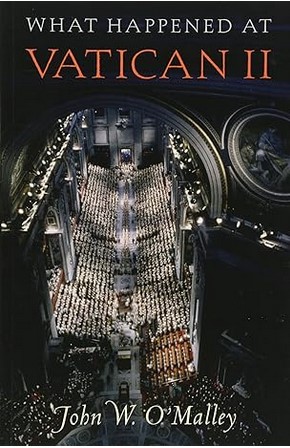
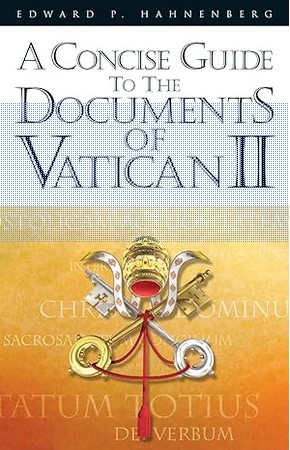
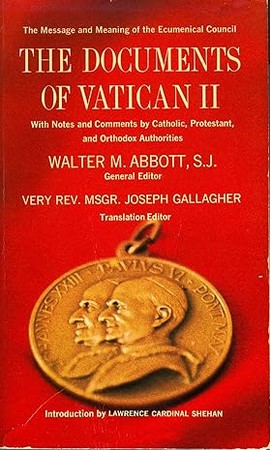
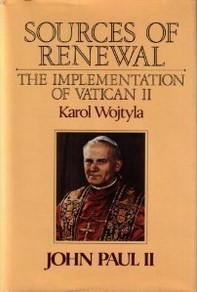
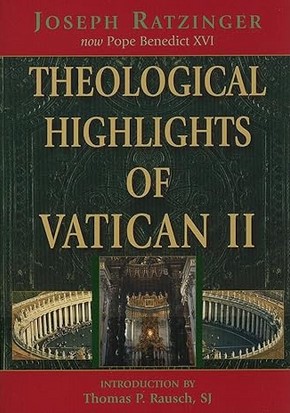
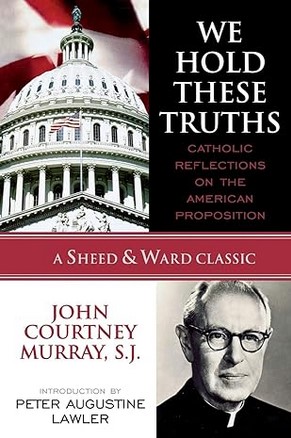
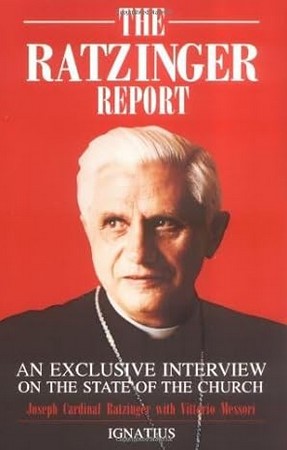
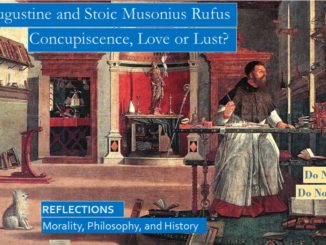
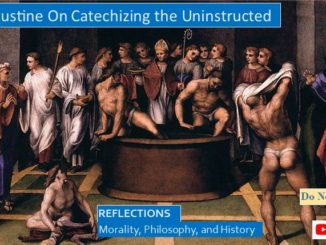
7 Trackbacks / Pingbacks